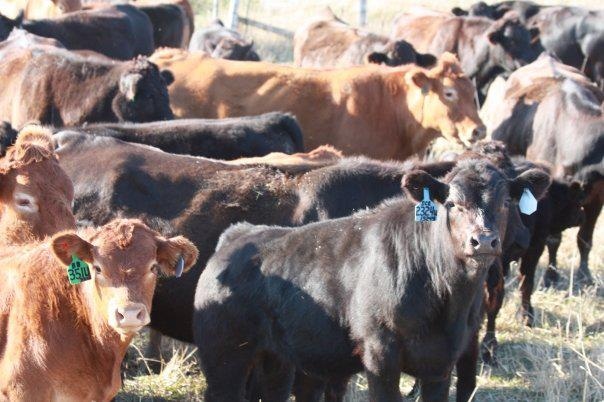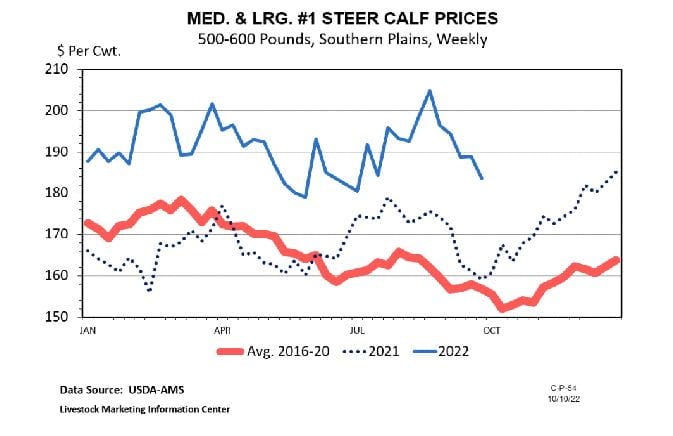Consider your late calving cows when it comes to making fall culling decisions.
October 19, 2022

Being an extension economist in a feeder cattle state, I don’t know how many times I have said, “This calf market needs some green grass!” Nothing fuels calf prices like spring pasture and the opposite typically occurs in the fall. As pasture growth comes to a close, the full impact of feed prices are felt and calf prices almost always pull back. With spring feeder cattle futures in the $190’s back in late summer, I was optimistic that calf prices might hold serve as we moved into fall. But, those spring futures prices have declined by about $15 per cwt and the calf market has dropped by a bit more than that. This can be easily seen in the price chart below. Seasonal lows in calf markets typically occur in October or November, so we are likely approaching that point as I write this.

In additional to approaching the time when most spring born calves are sold, we are also approaching the time when most producers make culling decisions for their cow-calf operations. Drought in much of the country has already forced significant culling this year. A quick look at the drought monitor below shows continued drought in the West and Southern Plains. But, over the last several weeks conditions have worsened in the Northern Plains and the Southeast. This has impacted fall pasture growth and hay supply and will also be on the minds of producers as they decide how many cows to carry into 2023.
I don’t know when I first heard someone reference culling the 3 O’s, but I mention it a lot in extension presentations. This refers to producers considering culling cows that are open, old, and ornery. As a general rule, I can’t argue with considering these three categories of cows as culling candidates. But, I also like to mention two other categories of cows to consider when one is looking at potential cows to cull.
First, I encourage producers to look at their late calving cows. Producers that capture weaning weights will likely notice these cows as they will tend to wean smaller calves, simply due to the calves being younger at weaning time. But, the lost value is really even more significant as there usually will be fewer of these late born, lighter calves. This means that when the calves from these cows are sold, they will be sold in smaller groups and take an additional discount for that reason. The number of calves that are sold in one group (often referred to as lot size) has a huge impact on price. The combination of weaning a smaller calf and having that calf sell in a smaller group can greatly impact the revenue associated with a late calving cow.
Secondly, I like for producers to consider the size of the cow when they look at their weaning weights. Again, records are key to being able to do this, but the concept is what is most important. Most costs are going to be higher for larger cows, which means they have to wean larger calves to offset those additional costs. Sometimes comparing cows based on the weaning weight of their calves, as a percent of their body weight, can provide a bit more perspective on which cows may be candidates for culling.
SOurce: University of Kentucky
You May Also Like



